Students on the Beamline at SHAD
At SHAD, I, along with 7 others SHADs, were given the opportunity to work with the Canadian Light Source in their Students on the Beamline program! Unfortunately, the electron-gun and linear accelerator section of the synchrotron was not functional during our time at SHAD, so we were unable to use the synchrotron itself. Instead, we decided to run some pre-synchrotron testing on the research question we had decided on in order to get information to potentially run a test on the synchrotron in the future! The research we had conducted was done with the help of the Chemistry Department of the Saskatchewan Structural Science Centre.
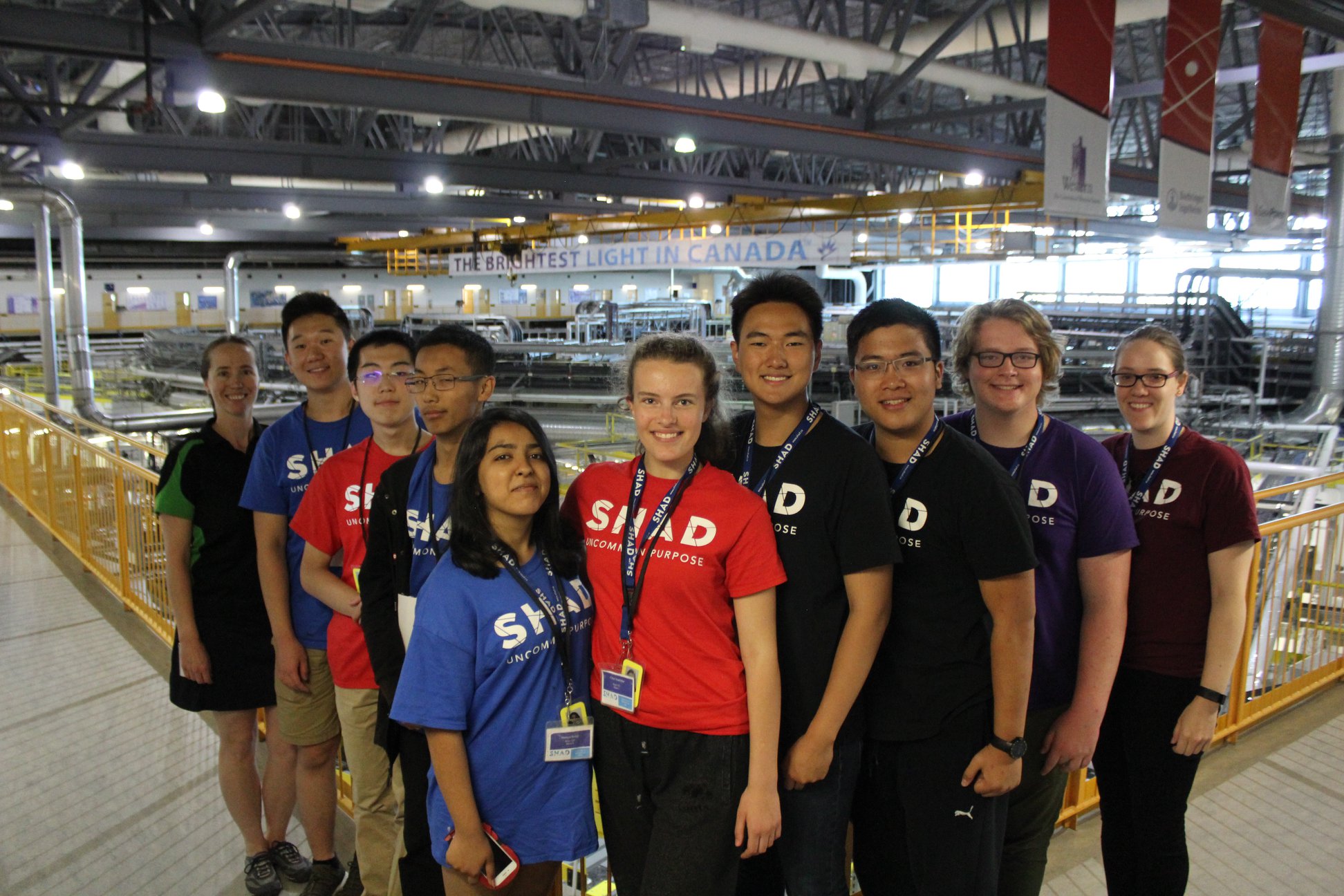 The 8 SHADs that worked on the project (center), along with Joyce McBeth (left), our project organizer, and Marla Cheston (right), our SHAD teacher fellow!
The 8 SHADs that worked on the project (center), along with Joyce McBeth (left), our project organizer, and Marla Cheston (right), our SHAD teacher fellow!
Here’s a quick summary of our project:
Research Question
“How does the degree of burn of food affect the presence and concentration of carinogens within it? What kind(s) of carcinogens are present?”
Abstract
This study aims to explore the changes in the chemical composition of common disaster foods such as starch products or canned foods. Specifically, the properties of the sample foods were evaluated using various structural analysis techniques such as gas chromatography-mass spectrometry, x-ray photoelectron spectroscopy, Raman spectroscopy, Fourier-Transform infrared spectroscopy, x-ray fluorescence, and nuclear magnetic resonance. The results from the test and compositional analysis showed that various chemical changes were progressively observed in the samples as a positive correlation with the degree of burn. Specific changes such as rises in aldehyde, amine, pyrene, and benzene structures qualified the claim of an increase in carcinogenic properties observed in samples as their burn time increased.
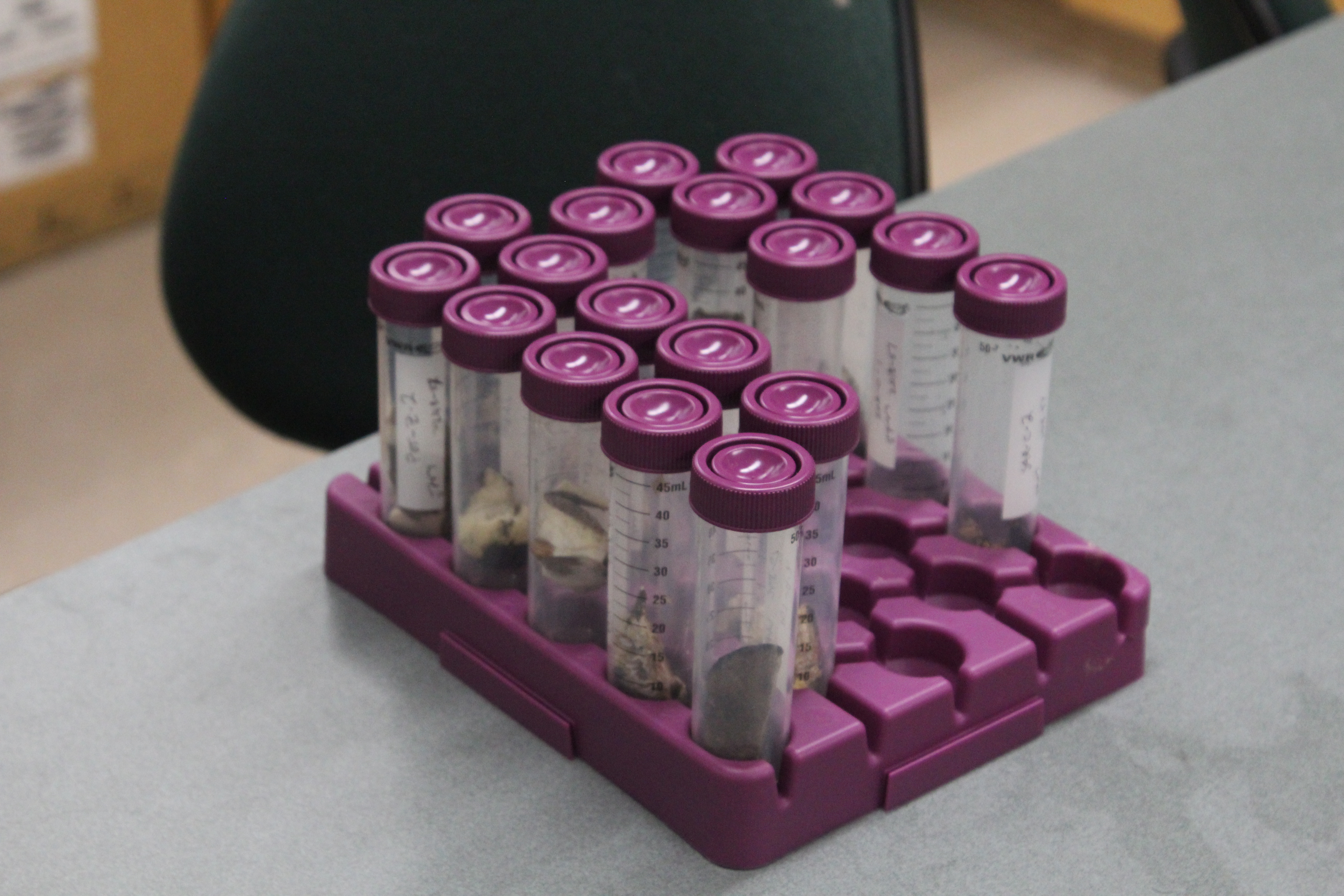 Freeze-dried samples of potatoes and sardines!
Freeze-dried samples of potatoes and sardines!
As you can see in the abstract of our project, we used several different structural analysis techniques in the analysis of our samples. The technique I used was gas chromatography-mass spectrometry (GC-MS).
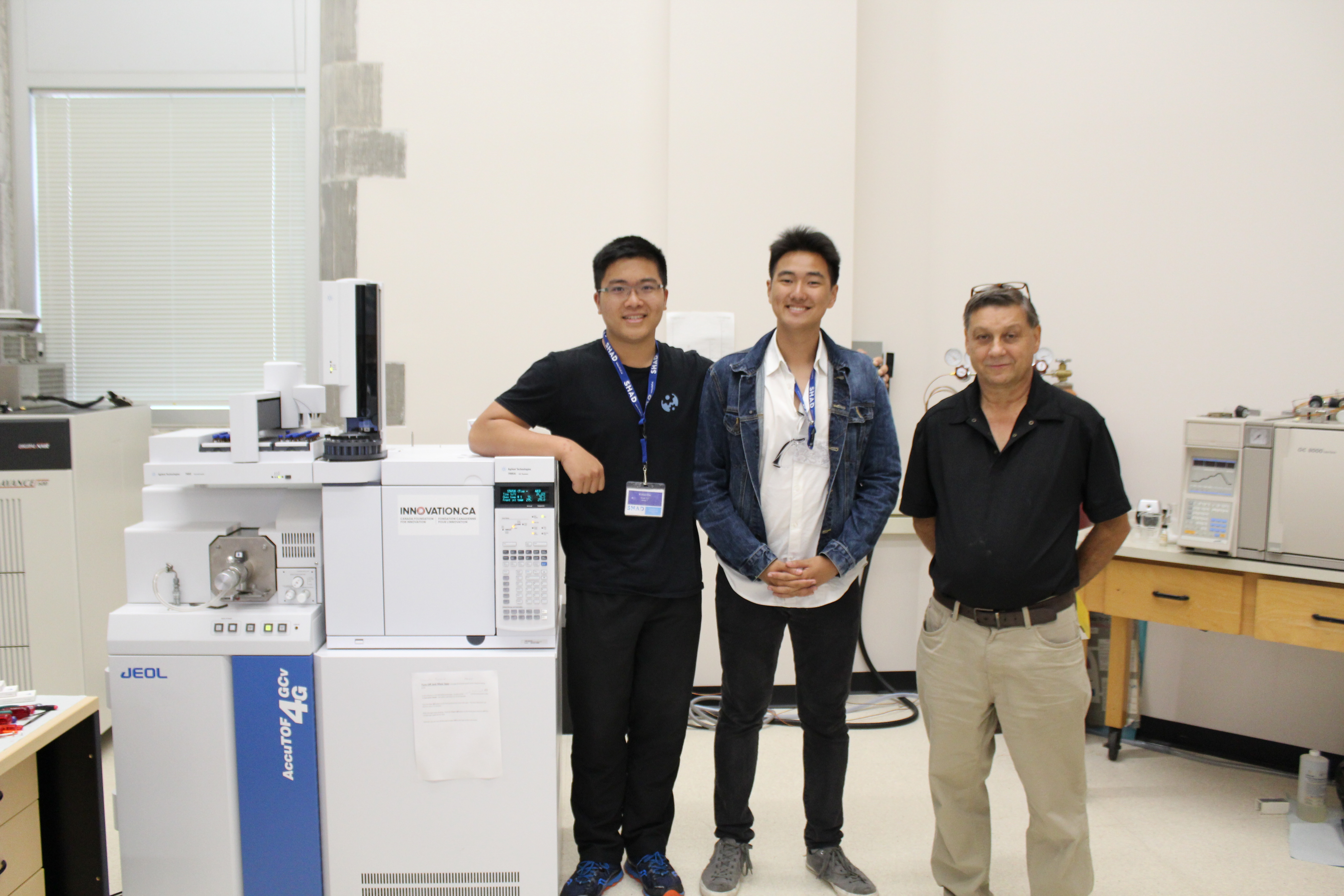 Me (left), my lab partner Harrison Gao (center), and our supervisor Ken Thoms (right), at the spectrometry lab with a GC-MS instrument!
Me (left), my lab partner Harrison Gao (center), and our supervisor Ken Thoms (right), at the spectrometry lab with a GC-MS instrument!
GC-MS combines both gas chromatography and mass spectrometry to identify substances within samples.
In the gas chromatography part of a GC-MS instrument, a solution is injected into a capillary column and a carrier gas is also pumped through the column. For our experiment, we used helium as our carrier gas.
Then, the column is gradually heated up to vaporize molecules at different times, which are then taken to the mass spectrometry part of the instrument.
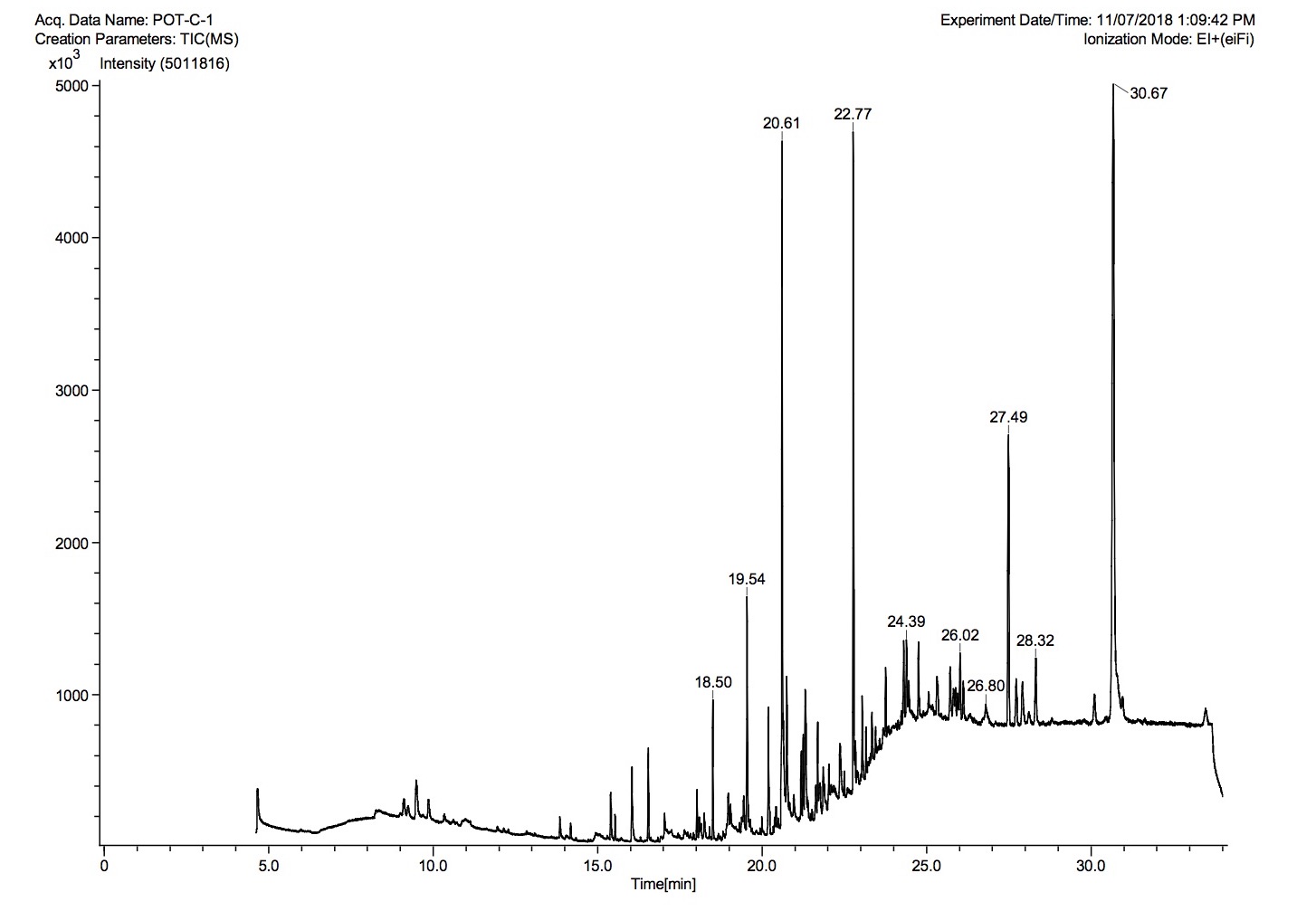 Gas chromatography creates a chromatogram view, which tells the intensity of ions at different times during the sample analysis.
Gas chromatography creates a chromatogram view, which tells the intensity of ions at different times during the sample analysis.
In the mass spectrometry part of the instrument, a metal filament is heated up, resulting in electrons hitting the sample entering from the GC part of the instrument.
The molecules in the sample fragment, and a positive repeller pushes positive ions into an analyzer.
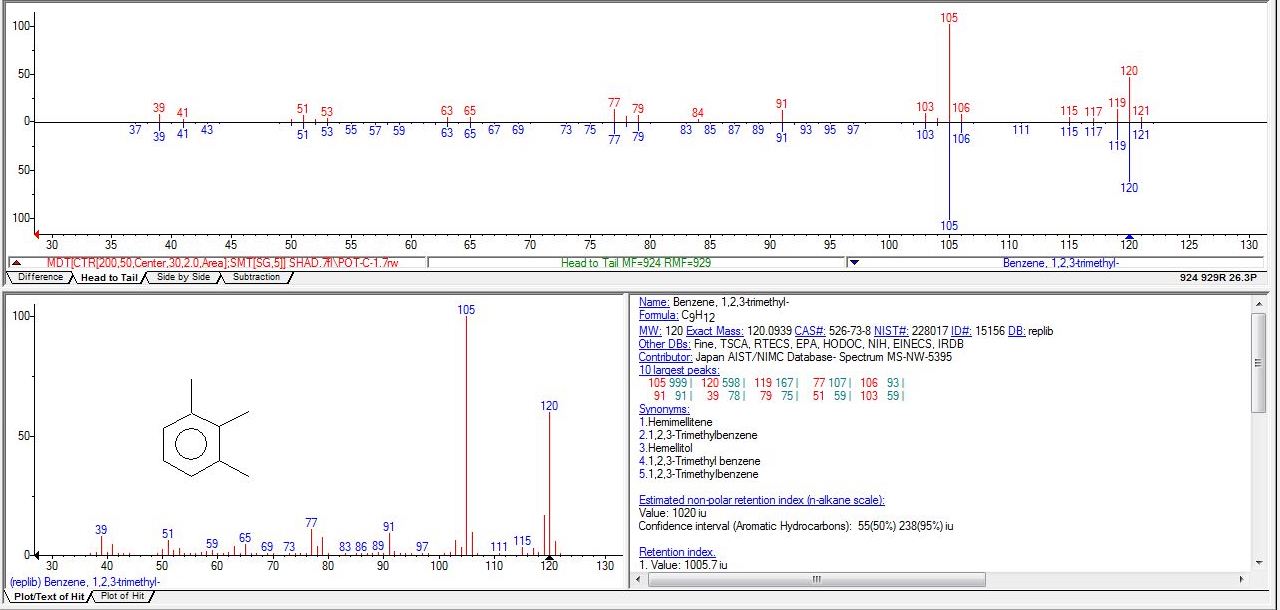 Mass spectrometry creates a mass spectrum, which tells the intensity of different atomic masses detected at one particular time. Then, we can do a library search of known substances to see if there’s a match between the mass spectra. In this case, the charred potato has a match for benzene, a carcinogen!
Mass spectrometry creates a mass spectrum, which tells the intensity of different atomic masses detected at one particular time. Then, we can do a library search of known substances to see if there’s a match between the mass spectra. In this case, the charred potato has a match for benzene, a carcinogen!
All in all, this process took 34 minutes per sample for us, though spending more time would have likely yielded more accurate and/or precise results.
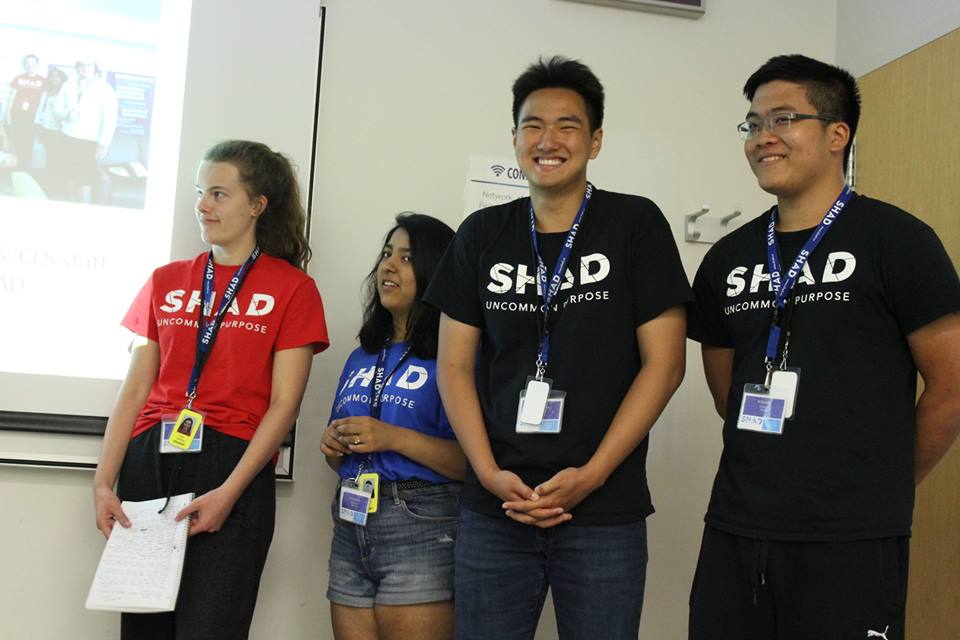 Presenting our results at our seminar!
Presenting our results at our seminar!
At the end of the project, we presented our results to the CLS staff in a seminar. It went very smoothly, and there were many awesome questions from our audience!
I would like to thank our amazing supervisors, Joyce McBeth, Marla Cheston, Anna-Maria Boechler, Tylor Sove, Ken Thoms, Jason Maley, Danielle Covelli, Rob Blythe, Stephen Urquhart, Peter Zhu, Cooper Skjeie, Ramaswami Sammynaiken, and Thomas Ellis for their invaluable help in our project!
I would also like to thank my fellow lab group members, Harrison Gao, Achilles Jiang, Yue Yang Yu, Brian Zhang, Eugene Zanone, Shreeya Soneji, and Chloe Asselstine for being an awesome group to work with!